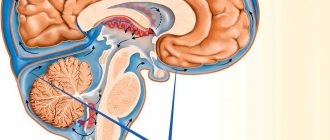Blood cancer, leukemia, leukemia or leukemia - these names define a type of malignant tumor that affects the bone marrow and is characterized by a high rate of metastasis. The disease is most often diagnosed in older people and children. A tumor occurs in the bone marrow as a result of the replacement of normal hematopoietic cells with malignant ones. This leads to disruption of the normal functioning of the hematopoietic system. The body stops producing platelets, leukocytes and red blood cells in the quantities necessary for life, producing white blood cells instead.
In the acute form of the disease, which occurs in children in 95% of cases, cells called blasts mutate. In the chronic form of leukemia, they degenerate into malignant mature blood cells. With the appearance of metastases, lymph nodes, kidneys, lungs, spleen, liver, etc. are affected.
Healthy organ tissue is gradually displaced, which leads to the following complications:
- the likelihood of developing infections increases;
- anemia appears;
- the risk of hemorrhage increases.
General information
Blood cancer is called leukemia (Wikipedia).
This is not an entirely correct definition, since the term “cancer” refers only to neoplasms of the epithelium, but in everyday life the concepts “cancerous”/“oncological” are used equally, which often mean all other malignant tumors. Leukemias are represented by a large group of heterogeneous diseases of the blood system of tumor origin, arising as a result of mutations in genes that occur with disturbances in the processes of proliferation, differentiation and maturation of hematopoietic cells. Such processes lead to the “displacement” of physiologically normal hematopoietic cells by leukemic ones, the formation of foci of extramedullary hematopoiesis/blastic infiltrates, which negatively affect the structures/functions of the tumor-bearing body. In normal bone marrow hematopoiesis, stem cells (blasts, progenitor cells), going through the stages of differentiation, maturation into mature cells and reproduction, form two blood sprouts:
- lymphoid ( B / T lymphocytes );
- myeloid (neutrophils - erythrocytes , granulocytes , platelets ).
When the maturation of blasts into mature cells is disrupted, blasts gradually accumulate in the bone marrow, while in the peripheral blood the number of physiologically normal blood cells decreases and blast cells appear, which can form extramedullary lesions (lymph nodes, spleen) when leaving the bone marrow. Leukemic cells are not identical to the elements of normal hematopoiesis (blast, maturing and mature cells). They are characterized by histochemical, immunophenotypic, cytomorphological and genetic abnormalities.
Based on their origin (histogenesis), forms of acute and chronic leukemia are distinguished. It should be noted that the traditional approach cannot be applied to these concepts: acute leukemia never turns into chronic, and chronic leukemia cannot become acute, since in acute leukemia stem (immature) blood cells are affected, and in chronic leukemia, various maturing/mature blood cells are affected .
There are two fundamentally different large groups of acute leukemia:
- acute lymphoblastic leukemia (ALL);
- acute myeloid leukemia (AML).
Each group is divided into many subtypes, which have their own characteristic genetic, morphological, immunological properties and treatment specifics.
The incidence of acute leukemia in different countries varies between 2-5 cases/100,000 population/year. At the same time, 75-80% of all acute leukemias in adults are AML and only 20-25% are ALL. The average age at diagnosis of AML is 63 years. At the same time, gender differences among young/middle-aged people were not identified, and among the older age group, males predominated (3:2).
The maximum incidence of ALL occurs in children aged 2-5 years (the average age of diagnosis is 14 years). It is one of the most common childhood cancers. In general, 60% of cases are under 14 years of age, and only 24% are over 45 years of age. There are no gender differences.
Acute leukemia is a potentially curable disease. With early diagnosis and modern treatment of a specific type of leukemia, 65-75% of patients with AML and 75-90% of patients with ALL can achieve complete remission within 5 years.
Due to the limited scope of the article, we will consider only acute myeloid leukemia in adults and acute lymphoblastic leukemia in children, as the most common.
Types of leukemia
More than half of all cases are acute leukemia of various forms, characterized by an aggressive increase in the number of poorly differentiated blast (immature) cells.
Chronic leukemia develops slowly, over several years, is found mainly in people over 40 years of age; in childhood, adolescence and adulthood, the development of the disease has its own characteristics.
In blood cancer, the stages differ from the gradation traditional for most malignant tumors, since cancer cells in this case immediately spread through the circulatory system throughout the body. However, during the development of the disease, the following stages are distinguished:
- initial - asymptomatic;
- expanded - symptoms of impaired hematopoietic processes appear;
- remission, complete or incomplete, when symptoms disappear or become less pronounced;
- relapse - the influence of malignant processes manifests itself again;
- terminal stage - the functioning of all important organs is disrupted, cure is almost impossible.
Send documents by email The possibility of treatment will be considered by the chief physician of the clinic Anton Aleksandrovich Ivanov, oncologist-surgeon, kmn
Hospitalization of cancer patients. Daily. Around the clock
9,500 patients trust us annually.
Call me back!
Pathogenesis
Leukemia is based on molecular genetic mechanisms. The pathogenesis of leukemia is characterized by staged molecular genetic disorders, reflecting the typical phasic nature of the development of malignant neoplasms. There are several stages of pathogenesis:
- The initiation stage (tumor transformation) develops in the stem/committed hematopoietic cell of the bone marrow under the influence of various carcinogens. It is based on point deletions (mutations) of suppressor genes (antioncogenes)/oncogenes with suppression of the anti-blastoma program, overexpression of oncogenes. As a result of such gene mutations, the mutated stem cell acquires the ability for unlimited division, i.e., tumor growth, and the hematopoietic stem cell now becomes a leukemia stem cell.
- Promotion stage (corresponds to the monoclonal stage of leukemia). In cases where there are promoter factors in the human body that enhance cell proliferation, the leukemia stem cell begins to divide indefinitely, which is the basis for the formation of an immortal monoclone of leukemia cells with an increase in its number as a consequence. That is, the formation of a tumor population in the bone marrow is based on the emergence first of one malignant stem cell and then the formation of a clone.
- Progression stage (corresponds to the oligo-polyclonal stage of leukemia). At this stage, further multiple mutations contribute to more pronounced destabilization of the genome of altered monoclonal cells with overexpression of new oncogenes against the background of suppression of antioncogenes. As a consequence, the emergence of aggressive malignant subclones with the gradual replacement of physiologically normal hematopoiesis, dissemination (spread) of the tumor carrier hematogenously into various tissues of the body with the formation of infiltrates of proliferating blasts, as well as foci of perverted hematopoiesis. Thus, the population of leukemia cells becomes oligo-/polyclonal, exerting an aggressive effect, which is expressed by a progressive clinical worsening of acute leukemia or blast crises in chronic leukemia. The pathogenesis of leukemia is shown schematically in the figure below.
Treatment
After leukemia is detected, treatment is selected in accordance with the form and stage of the disease, the level of damage to vital organs, age, and general condition of the body. The treatment method is chosen by a specialist - an oncologist, an oncohematologist, and his goal is to restore the normal hematopoietic process, achieve long-term remission, and ideally, a complete cure.
The choice of method largely depends on the form of the pathology. In acute cases of the disease, chemotherapy has a good effect; in cases of chronic disease, the most effective method is often a bone marrow transplant or stem cell treatment. Adverse symptoms are relieved by detoxification and hemostatic therapy, the introduction of healthy platelets and leukocytes, and courses of antibiotics.
Classification
The classification of leukemia is based on various characteristics, according to which several types are distinguished. According to the course (according to the ability of blood cells to differentiate and tumor progression) acute and chronic.
According to histogenesis (growth of hematopoiesis):
- Acute leukemias - undifferentiated , lymphoblastic (from B-cells/T-cell precursors) myeloblastic , monoblastic , myelomonoblastic , megakaryoblastic , promyelocytic , erythromyeloblastic .
- Chronic leukemia - chronic lymphocytic leukemia , chronic myeloid leukemia , paraproteinemic leukemia , etc.
According to the total number of leukocytes - leukopenic (<4000/μl); aleukemic (4000–20000/µl); subleukemic (20,000–50,000/μl) and leukemic (>50,000/μl).
Causes
Leukemias are polyetiological diseases. It has been established that the cause of blood cancer is mutations, which are a proven predictor of the development of the disease. What causes mutations? The exact reasons that trigger the mutation process are unknown, but it has been reliably established that there are risk factors whose impact on the human body increases the likelihood of developing cancer. Factors of this kind are: exposure to physical/chemical, biological carcinogens on the body. Particularly important is the impact of chemical carcinogens (toluene, benzene, arsenic, etc.), ionizing radiation, cytostatic drugs, household factors (smoking, food additives, car exhaust), and some RNA and DNA oncoviruses. More often, cancer develops against the background of hereditary/acquired defects of the immune system.
Genetic predisposition is of great importance in the development of leukemia: the presence of relatives of patients with acute leukemia sharply increases the risk of the disease. How is predisposition to cancer transmitted? This process is based on genetic pathologies/chromosomal abnormalities. Thus, the risk of developing acute leukemia increases with Down disease , Fanconi anemia , Louis-Barr syndrome , Wiskott-Aldrich syndrome , Klinefelter syndrome , etc.
Symptoms
Acute myeloid leukemia in adults is manifested mainly by the formation of anemic, hemorrhagic, infectious syndromes, which is caused by metaplasia of normal hematopoietic bone marrow tissue by leukemic blasts, leading to severe bone marrow failure. There are no specific symptoms in the early stages of AML. There may be weakness, loss of appetite, fatigue, fever without catarrh, and slight loss of body weight. During the height of the disease, symptoms of blood cancer appear:
- Severe anemic syndrome, which is caused by the suppression of erythropoiesis by leukemic blasts and is represented by severe metaplastic anemia , manifested by dizziness , pallor of the skin, and fainting.
- Hemorrhagic syndrome, which is based on disorders of the blood coagulation/anticoagulation systems, megakaryopoiesis (thrombocytopenia), which is expressed by petechial hemorrhages, increased bleeding, and the formation of hematomas in bruises .
- An infectious syndrome that is caused by the development of myelotoxic agranulocytosis , pancytopenia , provoking the development of severe viral/bacterial lesions of the body (mainly herpetic).
- Intoxication syndrome is manifested by anorexia , weakness, fever , weight loss up to cachexia , which increases in the presence of resistance to cytostatic chemotherapy.
- Hyperplastic syndrome is characterized by the development of regional/generalized splenoid lymphadenopathy/hepatomegaly, the formation of skin leukemides , gingival hyperplasia , which is caused by the formation/formation of extramedullary infiltrates of proliferating blasts in organs and tissues.
- Neuroleukemic syndrome. Caused by metastasis of blasts directly into the membranes of the brain/spinal cord, which is manifested by impaired cerebral circulation and the appearance of meningeal symptoms ( headache , Kernig's sign , stiff neck, paresis of the oculomotor/facial nerves, paresis of the lower extremities), the development of focal lesions of the central nervous system (sensory/disorders). locomotor functions), blast infiltration of both cranial and peripheral nerves with the gradual formation of a pain syndrome. Blast proliferations in joints/bones cause intense pain.
During remission of AML, signs of blood cancer are minimal or disappear completely. The symptoms of relapse are similar to the peak period. In the terminal period, the patient's condition progressively worsens and ends in death.
Survival prognosis
Blood cancer is a whole group of cancer diseases. It is quite difficult to predict a positive outcome of treatment. This is influenced by various factors: the specific type of cancer, at what stage it was detected, chronic or acute form, the age of the patient and his general health.
In the acute form, the disease progresses quite quickly and aggressively. However, in the initial stages it is rarely diagnosed due to ambiguous symptoms. Starting treatment at the initial stages of cancer development allows you to count on a favorable outcome. When blood cancer is detected at the last stage, the chances of a positive result of therapy are on average about 5%, since at this stage the malignant process spreads throughout the body and affects various organs and systems. The possibility of cure depends on the patient’s age and general health.
In the acute form, pediatric patients have the greatest chance of complete recovery - from 60 to 90% of clinical cases have a positive outcome of therapy and overcome the five-year survival threshold. However, the higher the patient's age, the lower the chances of a favorable outcome. Among middle-aged patients, therapy is completed successfully in only 50% of cases, and the remission process lasts more than 5 years. Among elderly patients, death occurs in approximately 70% of cases (within 5 years from the start of treatment).
Unlike the acute form, the chronic form proceeds rather slowly. Symptoms increase gradually and are not pronounced. Many diseases are characterized by a transition from acute to chronic, and vice versa. However, this does not happen with blood cancer. The chronic form of blood cancer is characterized by a calmer course, with the presence of blast crises. During crises, this form acquires the features of an acute form. In the chronic form of leukemia, about 90% of patients have a chance of a positive outcome from therapy. The mortality of patients during therapy occurs precisely during blast crises (about 80% of the total number of deaths). After the end of therapy, during a five-year period and later, death occurs in 25% of clinical cases.
Tests and diagnostics
The diagnosis is made based on the patient’s complaints, physical examination and laboratory test data. For this purpose, the following is carried out:
- General blood analysis. A complete blood count for cancer is a basic test. A blood test can determine cancer with a high degree of probability. In acute leukemia, the content of blast cells in the peripheral blood can reach 90–95% of all leukocytes. Characterized by anemia , pancytopenia / thrombocytopenia and a specific symptom - leukemic failure (the presence in the peripheral bloodstream of only blast cell elements, with the complete absence of transitional forms). The diagnosis of AML requires the presence of 20% or more blast cells on a peripheral blood smear.
- Blood chemistry. of albumin , fibrinogen , glucose are reduced and the indicators of bilirubin , urea , gamma globulins , and LDH are increased.
- Immunological analysis based on monoclonal antibodies. This blood test for cancer is often called a tumor marker test. It consists of processing blood cells with fluorescent monoclonal antibodies and introducing them into a blood vessel, followed by evaluation.
- Cytological examination of bone marrow puncture and evaluation of the myelogram, which allows us to obtain an accurate idea of the nature of erythropoiesis.
Additionally, instrumental studies are carried out (ECG, CT scan of the brain/chest organs, ultrasound of the abdominal organs/intra-abdominal and peripheral lymph nodes, etc.).
Diagnosis of leukemia in the oncology center
Diagnosis of leukemia in the oncology center, located at 2nd Tverskoy-Yamskaya Lane, is carried out in several stages:
- initial examination by a doctor with medical history;
- general and biochemical blood test;
- taking tests using modern diagnostic techniques: MRI, ultrasound, PET/CT, radiography, scintigraphy, SPECT.
One of the most informative diagnostic methods is bone marrow puncture (immunohistochemistry of punctate, cytochemical and cytogenetic analyses).
Highly qualified oncology specialists use the latest diagnostic equipment, which guarantees high diagnostic accuracy and safety for patients.
Blood cancer in children
Features of leukemia in children are:
- Predominance of acute leukemia.
- Of the acute types, lymphoblastic is the most common, accounting for 85% of cases.
- The peak incidence is from 2 to 5 years, with boys getting sick more often.
- Highly effective treatment of acute lymphoblastic leukemia (five-year survival rate 85%).
- Mortality at the age of 2-4 years.
Acute lymphoblastic leukemia is a disease in which malignantly altered lymphoid precursors—lymphoblasts—appear. The term "acute lymphoblastic leukemia" implies a generalized process involving the blood and bone marrow. The criterion for acute leukemia is the detection of lymphoblasts in the punctate of more than 25%. If there are less than 20% lymphoblasts, then it is lymphoblastic lymphoma. Bone marrow for analysis is taken from 3-4 points of the anterior and posterior wings of the ilium.
Symptoms of acute lymphocytic leukemia depend on the degree of saturation of the bone marrow with lymphoblasts. Symptoms of blood cancer in children are nonspecific at first: repeated infectious diseases, loss of appetite, weakness, fatigue, malaise. fever appears , pain in bones/joints, bleeding of mucous membranes (nosebleeds, gum bleeds), hemorrhages on the skin. The spread of blast cells to the lymph nodes and internal organs is accompanied by an enlargement of the liver, spleen and lymph nodes, which is manifested by abdominal pain and compression of the mediastinum by the lymph nodes. Neuroleukemia manifests itself as damage to the cranial nerves and meningeal symptoms. The most common signs are changes in the blood (anemia, thrombocytopenia) and frequent infections.
To increase the effectiveness of polychemotherapy in children, it is necessary to perform immunophenotyping of blast cells (HLA system). Immunophenotyping is carried out using flow cytometry (bone marrow is examined). In terms of prevalence, B-lymphoblastic leukemia is more common in children, 80-85%, than T-lymphoblastic leukemia, 15-20%. Treatment begins immediately after the diagnosis is made and is carried out according to the protocol. Dosage changes, omissions, or withdrawals are not permitted. The dose is calculated per square meter of body surface. Drugs are injected into the central venous catheter. Treatment is based on a combination of drugs and compliance with intervals between chemotherapy courses.
In Russia, BFM or Moscow-Berlin group protocols are used. According to protocols, patients are divided into groups: standard, intermediate and high risk, and patients receive different treatment options.
Treatment of children consists of phases:
- induction of remission (4 or more drugs administered over 4-6 weeks);
- consolidation;
- maintenance treatment (antimetabolites are prescribed for 2-3 years).
For induction therapy prednisolone , daunorubicin , vincristine , cytarabine , L-asparaginase , 6-mercaptopurine , cyclophosphamide . Treatment is carried out in a hospital. To increase efficiency, 4-component therapy is used. During the course of treatment, patients develop severe complications. The effectiveness of treatment is checked on day 8 (blood test), on day 15 (bone marrow test) and at the end of induction (bone marrow test). Children who undergo induction therapy and do not achieve remission become high-risk patients.
Children who achieve remission receive consolidation therapy. In the absence of complications, treatment can be carried out in a day hospital. If the protocol uses high doses of methotrexate , children must remain in the hospital 24 hours a day. Consolidation therapy includes several phases. Before the start of each phase, a clinical and biochemical blood test is performed. Consolidation treatment includes methotrexate , 6-mercaptopurine , L-asparaginase .
Maintenance therapy involves taking 6-mercaptopurine (every day) and methotrexate (once a week) and is carried out for 2 years, counting from the start of induction. The condition for proper maintenance treatment is to adjust the dosage of drugs depending on the level of leukocytes (their level should be 2,000-3,000/μl).
The protocols of the Moscow-Berlin group provide for reinductions ( dexamethasone + vincristine ) along with maintenance therapy every six months. During the entire period of maintenance therapy, the child must take a clinical blood test once a week, and after its completion - once a month. Ultrasound of the abdominal organs is performed once every 3 months. The child is seen by a pediatrician, and a hematologist examines him once every 3 months. The child is removed from the register upon completion of maintenance treatment and remission for 5 years.
Bone marrow transplantation provides the best results in terms of increased survival. Transplantation is indicated for all high-risk children during the first remission as early as possible. Therefore, donor searches are carried out immediately after identifying a high-risk group.
Indications for allogeneic transplantation in high-risk children:
- poor response to prednisolone + leukocytosis more than 100 x 10 in 9/l + certain genetic changes;
- lack of remission on the 33rd day of treatment;
- by the 15th day of induction, the presence of more than 25% blasts in the bone marrow in children at high risk of relapse.
Clinical blood test indicators for oncology
A clinical blood test allows you to conduct research on six indicators. Each of them, in case of deviation from the norm, indicates certain malfunctions in the functioning of vital systems.
Let's take a closer look at the indicators of a general blood test that may go beyond the normal range for cancer.
Hemoglobin
Hemoglobin is a complex protein that binds to oxygen and transports it to tissues. In the blood, hemoglobin is a component of red blood cells. Normal hemoglobin levels in adults look like this:
| Category of people | Hemoglobin norm |
| Women | 120-150 g/l |
| Men | 130-160 g/l |
With oncological pathologies, the level of hemoglobin in the blood decreases. Anemia or low hemoglobin levels are observed with tumors of internal organs with concomitant damage to the hematopoietic system. There are four main causes of anemia in oncology:
- problems with iron absorption;
- metastases in the bone marrow that block the production of hemoglobin;
- intoxication of the body;
- malnutrition without the proper amount of iron.
Leukocytes
Leukocytes are white blood cells that are normally present in the blood at a concentration of 4-9*109/l. These particles perform the body’s protective function against foreign antigens. With cancer, the level of white blood cells may increase or decrease.
Elevated white blood cells are observed in leukemia and cancer of any location. But leukocytosis is a nonspecific indicator. There are many factors for its development, and oncology is only one of them.
The cause of a reduced level of white blood cells (leukopenia) among cancer diseases can be:
- acute leukemia,
- metastases of neoplasms in the bone marrow,
- myelofibrosis,
- plasmacytoma.
It is believed that the leukocyte count is the main tumor marker in a general blood test. In case of serious deviations from the norm, a more in-depth examination is necessary.
Erythrocyte sedimentation rate (ESR)
ESR is an indicator that shows the rate of erythrocyte sedimentation under the influence of gravity. Normally, the ESR is:
| Category of people | ESR norm |
| Newborns | 0-2 mm/h |
| Children under six years old | 12-17 mm/h |
| Men under 60 years of age | no more than eight mm/h |
| Women under 60 years of age | no more than 12 mm/h |
| Men over 60 years of age | no more than 15 mm/h |
| Women over 60 years old | no more than 20 mm/h |
A cause for concern is an ESR exceeding the norm by three to five times. In terms of oncological problems, it may indicate malignant tumors localized in any organ, as well as blood oncology.
Platelets
Platelets are nuclear-free blood elements that are responsible for two important functions:
- closing the site of vessel damage by forming a primary plug (blood clotting);
- acceleration of plasma coagulation reactions.
Platelet standards depend on the age and gender of the person:
| Category of people | Platelet rate |
| Newborns | 100,000-420,000 U/µl |
| Children under one year old | 150,000-350,000 U/µl |
| Children from one to five years old | 180,000-380,000 U/µl |
| Children from five to seven years old | 180,000-450,000 U/µl |
| Men | 200,000-400,000 U/µl |
| Women | 180,000-320,000 U/µl |
Deviations from the norm of platelets are dangerous both in the direction of decrease and in the direction of increase. Thrombocytopenia (a decrease in platelet count below 100,000 U/μl) is characteristic of leukemia, and thrombocytosis (an increase in the rate in adults above 400,000 U/l) is characteristic of cancer pathologies of any location.
Prevention
There is no specific prevention of leukemia. For this disease, general principles are important: minimizing X-ray examinations, limiting contact with chemicals, and a healthy and active lifestyle.
For early diagnosis, it is important to undergo preventive examinations by a doctor and examinations, which necessarily include a clinical blood test with a leukocyte count. Even minor deviations in health should not be ignored: fatigue, bone pain, weight loss, loss of appetite, spontaneous bruises on the skin.
Clinical appearances
Acute leukemia usually develops quite rapidly, and the first symptoms become apparent several weeks before diagnosis. Disruption of normal hematopoiesis leads to such common symptoms of leukemia as anemia and increased bleeding. At the same time, other manifestations of pathology are nonspecific and do not always allow one to objectively suspect it. These are weakness, malaise, fever, weight loss. Usually the cause of fever is unknown, although in some cases a deficiency of granulocytes contributes to the rapid development of bacterial infections.
Increased bleeding is manifested by a tendency to form hematomas, petechial rashes, nosebleeds, and menstrual irregularities. Damage to the bone marrow can cause bone pain, which is especially common in children with acute lymphocytic leukemia. Signs of infiltration by atypical cells of certain organs may appear: enlargement of the liver, spleen, lymph nodes.
Chronic lymphocytic leukemia progresses slowly. Often they have no clinical manifestations at all or are accompanied by nonspecific symptoms - slight fever or unmotivated weakness. Clinical manifestations in the early stages of chronic myeloid leukemia are similar, but after a certain period of time, excessive accumulation of tumor cells occurs and the disease enters the blast crisis phase with a sharp deterioration in the patient’s condition.
Consequences and complications
- Infectious complications, the nature of which varies depending on the duration of neutropenia.
- Fever of unknown etiology, various infections ( bronchopneumonia , sepsis , skin infection, necrotic lesions of the oral mucosa) and invasive aspergillosis . As the period of neutropenia increases, the frequency of infectious complications increases.
- Severe complications in the form of bleeding, including hemorrhages in the intestinal wall, hemorrhages in the brain associated with thrombocytopenia , are often fatal.
- Infiltration of internal organs with leukemic cells, which causes enlargement of the lymph nodes , spleen or liver, decreased vision, damage to the respiratory tract, heart rhythm disturbances and heart failure, bone pain, blood in the urine, osteonecrosis , infiltrates in the intestines, which cause intestinal obstruction . Leukemia cells, accumulating in the blood, cause circulatory disorders, which leads to heart attacks and strokes .
- The development of autoallergic processes that lead to hemolytic anemia and severe granulocytopenia.
The causes of death are complications that are incompatible with life: bronchopneumonia , sepsis , cerebral hemorrhage , posthemorrhagic anemia with severe gastrointestinal bleeding.
Causes and risk factors
The true causes of most leukemia are still unknown. There are factors that may increase the risk of developing the disease:
- penetrating radiation;
- the effect of certain chemical compounds, for example, benzene;
- treatment with certain cytostatics (chemotherapy);
- Epstein–Barr virus infection;
- chromosomal disorders, including Down syndrome;
- immunodeficiency states.
It should be noted that although these factors increase the risk of developing leukemia, the vast majority of people do not.
Forecast
It is difficult to answer the question “how long do people live with blood cancer?” This depends on many factors, primarily on the variants of acute leukemia. When considering acute myeloid leukemia, the prognosis depends on the cytogenetic and molecular characteristics of the disease, the age of the patient and the treatment used. There is a chance of cure in patients no older than 60 years of age who have favorable cytogenetic changes without molecular changes, treatment quickly led to complete remission and the patients do not have extramedullary lesions (the liver, spleen, lymph nodes are not affected).
Polychemotherapy alone leads to a recovery of 90% in promyelocytic leukemia (a subtype of myeloid leukemia) and 50% in forms with a favorable prognosis in people under 60 years of age. With other types of myeloid leukemia and in people over 60 years of age, only 10-15% of patients are cured. The use of auto-HSCT increases the five-year survival rate of average-risk patients by up to 40%. The use of allo-HSCT cures more than 60% of patients. In the unfavorable risk group, treatment results remain unsatisfactory. Five-year survival is observed in only 10% of people over 60 years of age.
There are more than 20 variants of acute B-lymphocytic leukemia , including leukemias with genetic abnormalities (repetitive gene aberrations, presence of fusion genes), which significantly affect the course of the disease, sensitivity to specific therapy and prognosis. Acute B-lymphocytic leukemia with the formation of the BCR-ABL1 gene occurs in 25% of adults. Identification of the BCR-ABL1 gene is associated with a very unfavorable prognosis, a high risk of relapse and necessitates the use of specific high-dose chemotherapy . Acute B-lymphocytic leukemia with MLL gene rearrangements is observed in 80% of infants under 6 months of age and has a poor prognosis. An unfavorable prognosis for acute B-lymphocytic leukemia is noted:
- with leukemic form;
- in newborns and over 10 years of age;
- in the absence of response to treatment;
- for residual disease after a course of treatment;
- in case of early relapses.
In any case, acute leukemia without treatment is fatal. Without chemotherapy, patients die within 3 months from concomitant infections or bleeding. Currently, progress has been made in the treatment of leukemia, since polychemotherapy, bone marrow transplantation and the use of targeted drugs (biological drugs that selectively act on signaling pathways and stop tumor growth) are used.
In children with B-acute lymphocytic leukemia, remission is achieved in 95% of cases, and in adults - in 65-85%. The five-year survival rate for acute lymphocytic leukemia is 85-90%. As for chronic lymphocytic leukemia, life expectancy for them also depends on the genetic variant. Unmutated B-CLL has a progressive development, an extremely severe course and a short life expectancy; despite treatment, patients live up to 8 years.
Mutated chronic B-lymphocytic leukemia has a slow course and an average survival rate of 25 years.
Treatment of blood cancer at the oncology center
When developing tactics in the treatment of blood cancer, the type of pathology and individual characteristics of the patient are taken into account. Oncology doctors provide effective treatment using the following methods:
- chemotherapy, which is the process of introducing chemical drugs into the body that have a destructive effect on the tumor, using innovative syringe and infusion pumps;
- targeted drug therapy, during which only tumor cells are destroyed;
- radiation therapy (radiotherapy).
List of sources
- Hematology: national guide / Ed. Rukavitsyna O.A. - M.: GEOTAR-Media; 2015. - 776 p.
- Programmatic treatment of diseases of the blood system, ed. Savchenko V.G. M.: Practice; 2012: 155–245.
- Savchenko V.G., Parovichnikova E.N. Chapter “Acute leukemia” in the book “Clinical Oncohematology”, ed. Volkova M. A., M.: Medicine; 2001: 156-207.
- Gulyaeva I.L., Veselkova M.S., Zavyalova O.R. Etiology, pathogenesis, principles of pathogenetic therapy of leukemia // Scientific Review. Pedagogical sciences. – 2021. – No. 5-3. – P. 47-50.
- Rational pharmacotherapy of diseases of the blood system / Under the general editorship of Vorobyov A.I. // M.: “Litterra”, 2009 – 688 p.








